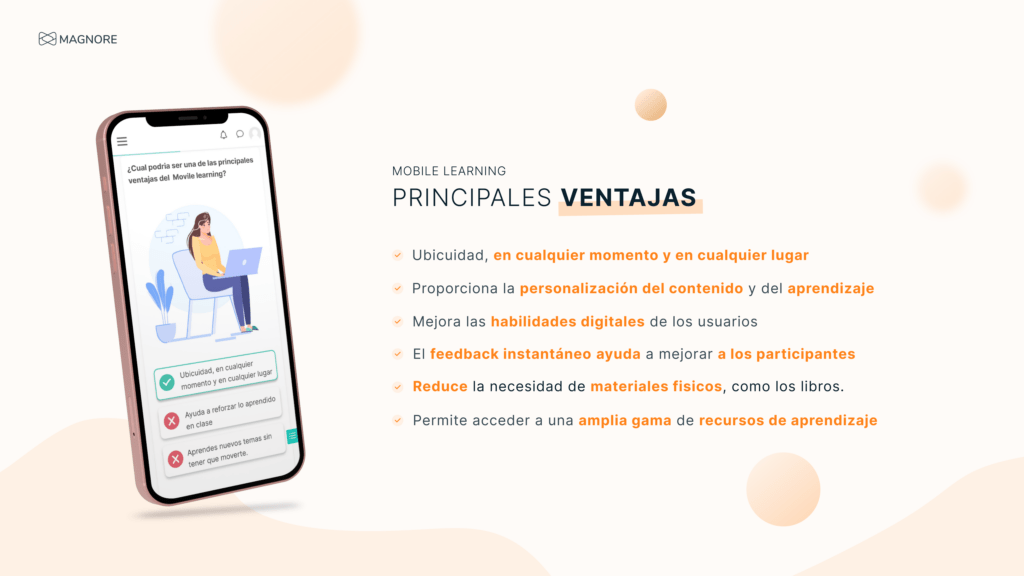The cell phone is a fundamental device in our daily lives. We practically use it for browsing, listening to music, reading e-books, shopping and looking at social networks, but also for learning. 📚
So, today we will talk to you about the positives of mobile learning, also known as m-learning, which allows users to learn through the use of mobile devices (smartphones, tablets or others) 📱
Advantages of Mobile Learning
There are many advantages offered by the use of m-learning, but if we have to highlight some of them, these are the ones that stand out:
- Mobile devices allow participants to learn in a flexible way: anytime, anywhere, as they are not limited to being present in a physical space.
- Many mobile learning applications and platforms allow customization of content and learning pace, which can help meet the individual needs of users.
- These applications can also make learning more engaging and fun for participants, which can increase their motivation and participation.
- Users can receive instant feedback on their participation. This allows you to help them understand and correct errors quickly.
- With mobile technology, users can access a wide range of learning resources, such as e-books, videos, podcasts, apps and more.
- Related to the above, mobile learning reduces the need for physical materials, such as textbooks and paper, resulting in significant savings for both educational institutions and participants.
- Finally, the use of mobile devices in learning allows users to develop and improve their digital skills, which are essential today.

When is it recommended to use m-learning?
Now that you know some of the main advantages of mobile learning, you may be wondering when can I use this format? 🤔 Let us clear up your doubts:
- To provide an accessible and effective way to offer education to those participants who cannot physically attend a classroom or are geographically located in different places.
- It can also be used to reinforce what is being taught in the classroom, allowing participants to review lesson material, complete assignments, or engage in interactive activities outside of class time.
- For those who combine work and studies, mobile learning offers a flexible way to acquire new skills or knowledge without the need to travel to a training center.
- It is an accessible alternative for those users who have certain physical limitations that make it difficult to attend face-to-face classes.
- When educational infrastructure is more limited or inaccessible, as mobile devices allow access to resources and learning opportunities anywhere.
To make effective use of m-learning, it is not only necessary to introduce these tools in the organization, it is also necessary to carry out more profound changes that take into account the use of methodologies that encourage the active participation of users and that contemplate new learning strategies, resources and adequate teacher training in order to take full advantage of the benefits of these technologies.
That’s why at Magnore we digitize all our courses in responsive, so that you can provide users with a richer, more flexible and more personalized learning experience. Want more details? Click here. 👈
Social networks in education
We have found that m-learning can be tailored to the individual needs of users, which can help increase their motivation and commitment to learning. Participants can learn at their own pace, choosing when, where and how they want to learn.
But can social networks be useful in education? In general, they are often seen as something quite negative, usually considered a distraction. However, we can turn social networks into a good ally for education inside and outside our organizations.
Therefore, we encourage you to follow us on our social networks so that, in addition to learning, you will also be up to date with our latest news 😉.
Magnore e-learning
